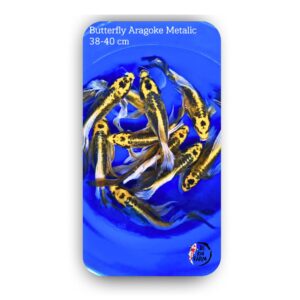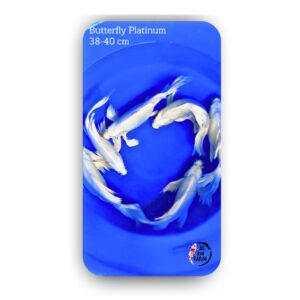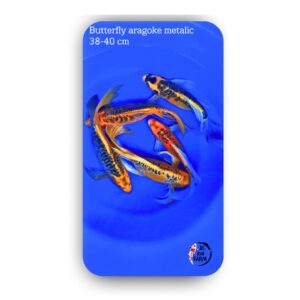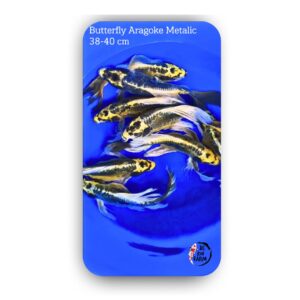
Fin Rot is a koi disease caused by bacterial attack (bacterial infection). This disease attacks the fins and tail of the koi. The main cause is the low quality of pool water. If you have a pond, especially with a fairly dense koi population, of course you have to put in a good and correct filtering system to maintain the quality of your pond water. Why is that? Because the quality of the pond water really affects the health of your koi. For this reason, good and continuous care is needed for your pond water if you want your koi to remain healthy.
Fin Rot is caused by a bacterial infection. It is thought that several different bacteria cause similar illnesses, such as Flavobacterium (formerly known as Flexibacter), as well as Aeromonas and Pseudomonas.
In fact, what makes these bacteria start to attack is because the koi are under stress due to the worsening quality of the pond water. The ability and endurance of each koi is different in dealing with this disease. Therefore, Fin Rot is not easily transmitted and usually only attacks one or two individuals. However, if it is not immediately discovered, more and more koi will become victims.
Initially, the bacteria begin to eat the clear membrane on the fins. The signs are that the area affected by the disease will appear milky white, especially at the edges. If this is left alone, little by little the damaged part will spread and these bacteria will continue to damage and eat the entire organ until it is completely gone.
In acute conditions, due to damage to all parts of the fins, the koi’s condition becomes weaker, making it potentially susceptible to other diseases (secondary infections). If it is still in the early stages, the disease can be easily treated and the fins can grow back. However, if the condition is too severe, the Koi will be difficult to treat and may die.
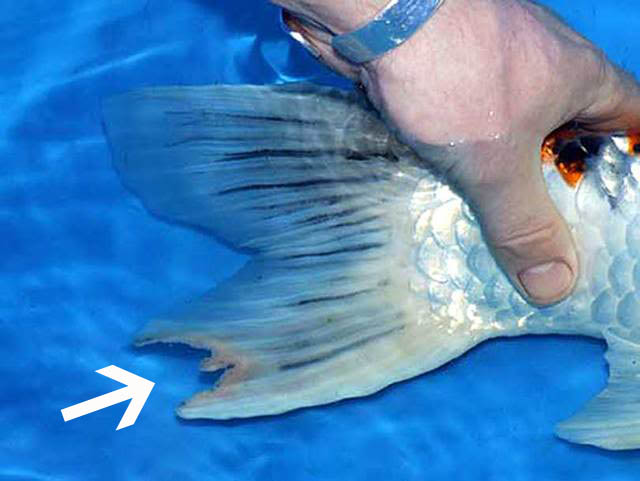
Apart from attacking the fins (Fin Rot) it also attacks the tail (Tail Rot). There are also those that attack the koi’s gills (Gill Rot). To find out is quite easy, namely by observing both gills, whether there are signs of white spots. If you can see spots on the gills of a Koi that have spread throughout the area, then this is a sign that most of the tissue in the gills has been damaged and can no longer function as a respiratory organ. As a result, it is easy to predict that the koi will not be able to survive much longer if it is not treated immediately.

If you find a koi with signs of Fin Rot disease, what you can do immediately is as follows:
1. The first step is to remove all koi that are indicated to be infected with Fin Rot and then move them to a quarantine tank temporarily during the care and treatment period.
2. Improve the quality of pool water, including replacing some of the water and checking the condition of your pool filter to see whether it is still functioning properly.
3. During the quarantine period, the koi do not need to be given food in order to prevent the koi from excreting feces which can pollute the water in the quarantine tank.
4. Give the medication needed to treat Fin Rot attacks in the correct dose. Medicines commonly used include Melafix as an anti-bacterial and Acriflavin to treat rotting wounds.
5. To eradicate fungal and bacterial infections in koi ponds, a salt solution with a concentration of 1% is needed, or a solution of 10 g of salt and 1 liter of water. This salt solution should be given little by little so that the concentration is reached after 24 – 48 hours. So don’t give it 1% all at once, but give it gradually. This is done to avoid osmotic shock or stress in the existing koi fish. Initially the solution concentration can be started at a level of 0.1 – 0.2%. Then salt is added regularly at certain time intervals, for example every 3-4 hours. If the fish experience stress during the increase in salt concentration, stop this treatment immediately, then replace some of the water so that the salt concentration drops to its original level.
6. If treatment with antibiotics is necessary, oxytetracycline can be used at the right dose.
The following things can prevent your koi from being attacked by Fin Rot disease:
1. Always maintain the quality of your pool water in good condition. Make sure the pool filter system is functioning properly.
2. Replace the filter media or clean it as necessary, to increase its effectiveness.
3. Periodically change the pool water, at least 20-25% per week.
4. Make sure you provide quality feed and maintain a good diet, to keep the koi healthy.
5. Ensure that the pool is protected from various pollution and other disturbances.
Hopefully this will be useful for all Be Koi Farm customers wherever they are.
